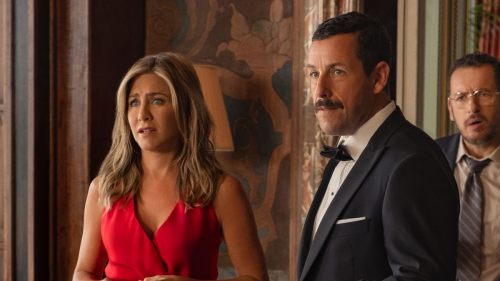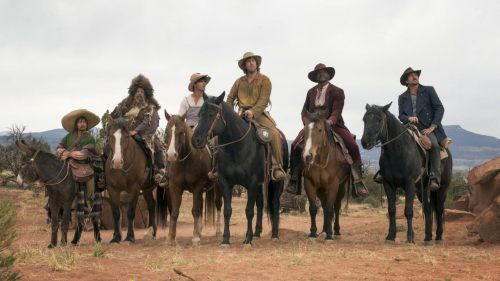How Netflix Saved THE TAKING OF DEBORAH LOGAN
Insidious: The Last Key opened to a very solid $29.2 million over the weekend, which should give a big boost to its director Adam Robitel, a newcomer to the supernatural franchise. It’s also a score for theatrically released, modestly budgeted genre fare at a time when a lot of it is going straight to digital and streaming platforms—which makes it a bit of an irony that Netflix helped rescue his previous film, The Taking of Deborah Logan, from oblivion.
The Taking of Deborah Logan follows a documentary team led by med student Mia (Michelle Ang) as they shoot a video portrait of the titular senior citizen (Jill Larson), who is suffering from Alzheimer’s disease. As we watch through their lenses, Deborah’s behavior becomes increasingly bizarre and violent, and it becomes clear she’s afflicted not by illness, but by an evil presence. Robitel creates some memorably horrific images as the possession worsens, particularly one involving a young girl Deborah has abducted. “It’s so hard to come up with new scares,” he says. “[Producer] Bryan Singer, when we were developing The Taking, kept saying, ‘What are your five images that I haven’t seen before?’ and one of them was an elderly woman’s jaw distending and swallowing a little girl’s head. When I came up with that, all the scares kind of permutated from this one kernel. If you can tap into something that’s truly primal, somebody’s going to respond.”
Unfortunately, audiences at first didn’t have much of a chance, as The Taking of Deborah Logan was given a negligible launch by Millennium Entertainment in October 2014. “I can be completely candid now that I’ve had some time away from it,” Robitel says. “The distributor didn’t believe in the movie, based on an early preview. When you’re starting out as a filmmaker, nothing emotionally prepares you for your first test screening. They’re always painful, and you’re sort of set up for failure, because you have 300 people, many of them don’t want to be there—it’s a free movie ticket—and then they have a series of questionnaires. The Taking of Deborah Logan was a found-footage movie, but it wasn’t finished, so you had actors looking at blank computer screens, and the suspension of disbelief was completely gone. And the money shot of Deborah swallowing the girl’s head didn’t look right.
“So it tested incredibly poorly,” he continues. “I think it got a 37 score, and two days later they sat me down, and it was like a memorial. They put this giant book in front of me, this tome of how my movie was a failure in every demographic, and it wouldn’t work. It was the worst day of my life, and I was just winded.”
Millennium didn’t even give the film a Blu-ray release, just DVD and VOD—but The Taking also went to Netflix, and that’s where people started noticing it. This writer recalls half a dozen fellow horror fans praising the movie after catching it on the streaming service; iHorror.com later called it “the scariest movie on Netflix.” “For whatever reason, it was at the right place at the right time,” Robitel recalls. “It kind of went viral, and The Wrap called it ‘a Netflix horror gem.’ In some ways now, in retrospect, that success was so much more vindicating, because people discovered it and shared it, and there were no advertising materials or marketing might behind it; it wasn’t forced down people’s throats. People just responded to it.”
Another of the film’s boosters was James Wan, which led to Robitel getting the call to take the director’s chair on Insidious: The Last Key. That movie gave him the chance to put another woman of a certain age (Elise Rainier, played by Lin Shaye) at the center of a horror story, continuing the unconventional approach of The Taking. “Not everybody necessarily wants to watch a drama about an elderly woman with Alzheimer’s,” he says, “but I was very close with my grandmother, and it feels like horror films typically only go for a certain demographic, so THE TAKING’s story was interesting to me.
“At the end of the day,” he adds, “I find that I just have to be zen about what happens to my movies, because I have no control over how people are going to respond, and if I try to second-guess myself, it’s just maddening. You have to trust your gut and hope it connects. And then, you know, a snowstorm could hit the Eastern seaboard and threaten to destroy your box office, so at the end of the day, I try to avoid thinking about the results. Netflix is a sea change, and these days a lot of movies wind up there and don’t get any traction, and for whatever reason, ours did.”



